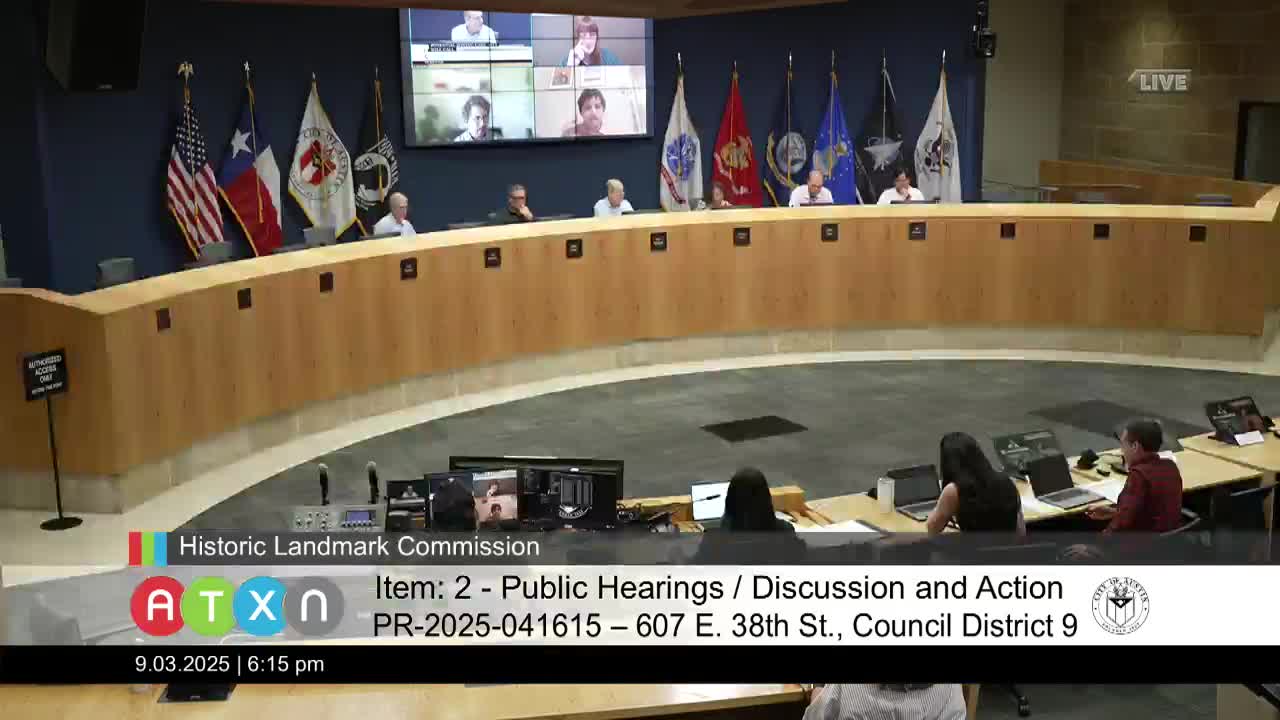Commission Evaluates Historic Zoning for Margaret Badger House at 1712 Rio Grande Street
September 03, 2025 | Austin, Travis County, Texas
Thanks to Scribe from Workplace AI , all articles about Texas are free for you to enjoy throughout 2025!

This article was created by AI using a video recording of the meeting. It summarizes the key points discussed, but for full details and context, please refer to the video of the full meeting. Link to Full Meeting
Charles Darkwood, president of the Hancock Neighborhood Association, stepped forward to express his support for the historic zoning of a property that had recently garnered attention. He commended the city staff and commissioners for their diligent work and knowledge regarding the case, emphasizing the importance of community involvement in preserving the neighborhood's character.
However, the atmosphere shifted as Jorge, the property owner, voiced his concerns. He argued that designating his property as historic would complicate his plans for a new build that he hoped would blend seamlessly with the neighborhood. His plea highlighted the tension between preservation and development, a common theme in urban planning discussions.
As the commissioners weighed the merits of the case, it became clear that while the property held aesthetic value, it did not meet the stringent criteria for historic designation. One commissioner noted that despite the building's charm, it lacked the historical significance required for such zoning. This decision was crucial, as it would determine whether the owner could proceed with his plans or face restrictions that could stifle development.
Ultimately, the commission voted to approve a demolition permit, contingent upon the completion of a documentation package. This decision allows the owner to move forward while ensuring that the history of the property is recorded, striking a balance between progress and preservation.
The meeting also addressed another property, the Margaret Badger and MH Bridal House, which is under consideration for historic zoning. Staff recommendations indicated that this building is eligible for individual listing as a historic landmark, reflecting the ongoing efforts to recognize and protect Austin's architectural heritage.
As the evening drew to a close, the discussions underscored the complexities of urban development in a city rich with history. The decisions made in this meeting will resonate throughout the community, shaping the landscape of Austin for years to come. The dialogue between preservation and progress continues, reminding residents and officials alike of the delicate balance required to honor the past while embracing the future.
Converted from Austin - Historic Landmark meeting on September 03, 2025
Link to Full Meeting
Comments
View full meeting
This article is based on a recent meeting—watch the full video and explore the complete transcript for deeper insights into the discussion.
View full meeting
